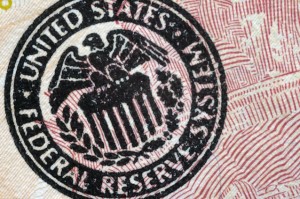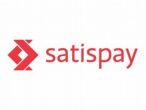in caricamento ...
Nulla di nuovo fronte FED anche se solo all’apparenza
Il FOMC di ieri sera è stato equilibrato e non rivoluzionario.
In altri termini, Janet Yellen ha fatto il possibile per mantenere le vecchie linee di pensiero, in quanto sa benissimo che nulla è più stabilizzante della perdita delle certezze costruite nel tempo.
E così certe decisioni prese sono quasi ovvietà.
In primis la riduzione (tapering) del sostegno monetario (quantitative easing) di ulteriori 10 miliardi di USD come da programma. Mancano ormai solo 15 miliardi, di cui 10 di treasury e 5 di mutui cartolarizzati. E ad ottobre, se non ci sono grosse novità, il taperign completerà la sua opera e di termineranno gli acquisti della FED.
In ambito tassi non ci si aspettavano certo novità. O meglio, non si pensava di certo che la FED alzasse proprio oggi i tassi di interesse, che restano fermi nella forchetta fra lo 0 e lo 0,25%. Ma quando saliranno i tassi, cara Janet?
I tassi di interesse negli Stati Uniti a un certo punto dovranno crescere, ma questo dipenderà dall’andamento dei dati macroeconomici. Il primo giro di vite “potrà arrivare prima del previsto” e poi gli aumenti potranno seguire “più velocemente” se le condizioni economiche lo consentiranno. Viceversa, se ci fosse un rallentamento i tassi potranno salire “più tardi e meno rapidamente”. (Source)
Bene, prima o poi i tassi cresceranno. Ma che belle previsioni. Molto più interessante invece l’affermazione successiva: i tassi potrebbero salire prima del previsto. Intanto però la “press release” mantiene invariata la famosa frase “considerable time”. Quindi non viene rimossa l’idea di mantenere i tassi bassissimi per un considerevole periodo di tempo.
No problem, quindi, si va avanti per il momento anche se le previsioni stilate dai membri FED ci illustrano uno scenario un po’ più “falco”, in quanto la media si sta progressivamente alzando, portando ad una previsione di aumento dei tassi sempre più prossima. Ma come detto, sarà l’economia a dettare legge. Anche se solo a parole (e poi la FED farà come lei crede).
Il timore era quello di ritrovarsi con una FED che ha ormai deciso di abbandonare il mercato? No problem, ci pensano le parole di Janet: “la politica monetaria resta altamente accomodante perché l’economia cresce a una velocità moderata e il mercato del lavoro migliora ma non si è ancora ripreso del tutto”. Anzi, la Yellen ci tiene a ricordarci che “la Federal Reserve potrà usare altri strumenti supplementari se necessario e continuerà a valutare l’andamento dell’economia nel suo complesso, non solo un singolo indicatore, per prendere le decisioni più adeguate.”
Intanto però si tagliano anche se marginalmente le stime sul PIL a fine 2014 (2%) e a fine 2015 (2.6%)
 MORALE: di per se non si scorgono EVIDENTI dettagli di un repentino rialzi di tassi. Ma si notano tanti piccoli elementi che ci segnalano una situazione economica che negli USA si sta logorando (PIL) con previsioni sul primo aumento dei tassi che stanno mutando a favore di una più rapida prima stretta. Come sempre eccellente la comunicazione: equilibrata e rasserenante per il mercato. Finchè le condizioni lo permetteranno.
MORALE: di per se non si scorgono EVIDENTI dettagli di un repentino rialzi di tassi. Ma si notano tanti piccoli elementi che ci segnalano una situazione economica che negli USA si sta logorando (PIL) con previsioni sul primo aumento dei tassi che stanno mutando a favore di una più rapida prima stretta. Come sempre eccellente la comunicazione: equilibrata e rasserenante per il mercato. Finchè le condizioni lo permetteranno.
Intanto giocate con noi e provate a dire quando arriverà questo primo rialzo dei tassi USA; secondo voi.
Quando alzerà la FED i tassi di interesse ?
- Primo Trimestre 2016 (34%, 299 Votes)
- Secondo Semestre 2016 (18%, 159 Votes)
- Autunno 2015 (15%, 128 Votes)
- Dopo il 30/06/2015 (12%, 108 Votes)
- Inverno 2015 (12%, 104 Votes)
- Estate 2015 (9%, 76 Votes)
Total Voters: 937
STAY TUNED!
(Clicca qui per ulteriori dettagli)
(Se trovi interessante i contenuti di questo articolo, condividilo ai tuoi amici, clicca sulle icone sottostanti, sosterrai lo sviluppo di I&M!). E se lo sostieni con una donazione, di certo non mi offendo…
I need you! Sostienici!
Segui @intermarketblog
Questo post non è da considerare come un’offerta o una sollecitazione all’acquisto.
Informati presso il tuo consulente di fiducia. Se non ce l’hai o se non ti fidi più di lui,contattami via email (intermarketandmore@gmail.com).
NB: Attenzione! Leggi il disclaimer (a scanso di equivoci!)
il cerino.
80 mld di liquidità dal tltro in più (solo per qualche giorno… chiaro oramai). un 100 dalla PBOC con taglio dei tassi alle prime cinque banche (con un sistema bancario che aumenta i propri asset di 1 trilione l’anno). I fondi pensione giapponesi che comprano a leva equity (poveri pensionati).
Il cerino acceso lo hanno tutti in mano e nessuno sa’ a chi darlo.
Dicono che per uscire dalle sabbie mobili occorra camminare all’indietro. Non in avanti. Finchè il debito globale aumenta più velocemente del gdp non se ne esce.
gnutim@finanza:
NON ALZERANNO MAI, ANCHE LORO SONO NELLE CONDIZIONI DEL GIAPPONE, 0 FOREVER
– – – – -l In exclusive for the Italy l- – – – –
… “Oversight relies on independent evaluation of the Fed; disclosure is an issue of what internal information the Fed releases to the public.
A potential consequence of greater oversight is that it could undermine the Fed’s political independence.
Most economists believe that the Fed’s political independence leads to better policy outcomes and makes policy more effective by enhancing the Fed’s credibility in the eyes of market participants.” …
… “Before 2007, Fed lending to the financial system was minimal and monetary policy was limited to the buying and selling of U.S. Treasury securities.
Public and congressional interest in Fed disclosure increased in response to the significant financial assistance provided by the Fed to the financial sector during the financial crisis.
As the crisis unfolded, the Fed publicly released a significant amount of information on its emergency actions.
The Fed voluntarily provided detailed information to the public on the general terms and eligibility of its borrowers and collateral by class for each crisis-response program. It also provided a rationale for why each crisis program was created, and an explanation of the goals the program aimed to accomplish.
Beginning in June 2009, the Fed began releasing a monthly report that listed the number of and concentration among borrowers by type, the value and credit-worthiness of collateral held by type, and the interest income earned for each of its facilities.” …
… “The granularity of information to be disclosed is a policy issue.
Aggregate information about programs and activities that does not require the identification of borrowers tends to be more useful for broad policy purposes, while current information on specific transactions within the programs is of interest to investors.
The Fed voluntarily released the former, but only reluctantly released the latter when compelled to by legislation and lawsuits.
For oversight purposes, the former would suffice for answering most questions about taxpayer risk exposure, expected profits or losses, potential subsidies, economic effects, and evaluating the state of the financial system.
The latter would be necessary for transparency around issues such as favoritism (certain firms receiving preferential treatment over similar firms).
Although preventing favoritism is a valid policy goal, releasing the identities of borrowers to “name and shame” them is more questionable, especially if one believes that these programs were helpful for providing liquidity and maintaining financial stability.
“Naming and shaming” is likely to result in less uptake of the programs in the future.
If one believes that these lending programs are not helpful, eliminating the programs would be more effective than undermining their effectiveness by stigmatizing recipients.” …
… “The Fed’s unprecedented response to the financial crisis moved it into new policy areas involving decisions that were arguably more political in nature, such as deciding which financial actors should be eligible to access Fed credit.
New policy instruments were also potentially riskier than the discount window, and, unlike the discount window, were not explicitly endorsed by legislation at the time (many were authorized under its broad emergency authority).
At this point, the emergency programs are winding down, lending is low, and Fed activities have shifted back to the traditional buying and selling of U.S. Treasury securities.
As a result, some rationales raised during the crisis for greater oversight and disclosure are waning.
Were another crisis to occur, Fed lending could potentially scale up quickly again, however.
Although few policy makers argue for total independence or total disclosure and oversight, the policy challenge is to strike the right balance between Fed independence and Fed accountability.” …
(…)
[… *Janet Yellen* …:]
“I feel that it would be a grave mistake for the Fed to commit to conduct monetary policy according to a mathematical rule.
No central bank does that.
And I believe that although under the legislation we could depart from that rule, the level of short term scrutiny that would be brought on the Fed in real-time reviews of our policy decisions would essentially undermine central bank independence in the conduct of monetary policy.”
l- – – – –
M. Labonte (Congressional Research Service), “Federal Reserve: oversight and disclosure issues” – CRS Report No. R42079: September 19, 2014
http://fas.org/sgp/crs/misc/R42079.pdf
[*] Janet Yellen (Fed, Board, Chair), “Testimony before U.S. Congress, House Committee on Financial Services” – 113th Congress, 2nd session: July 16, 2014
– – – – -l
… “She said you don’t need time
We changed, you won’t need your maid inside
My faith won’t lie
He said you don’t need mine
Behave, you want to be my lady lover
Of my eighteen summers, we’re long
She said, you don’t read minds
Be patient, you won’t leave me shaking
Leave me shaking” …
Interpol, (El Pintor) – “All the rage back home”, 2014
http://www.youtube.com/watch?v=-u6DvRyyKGU
– . – . – . l . T . – . – . –
サーファー © Surfer [“Be paid, you ought to see my face in lights”]







NON ALZERANNO MAI, ANCHE LORO SONO NELLE CONDIZIONI DEL GIAPPONE, 0 FOREVER